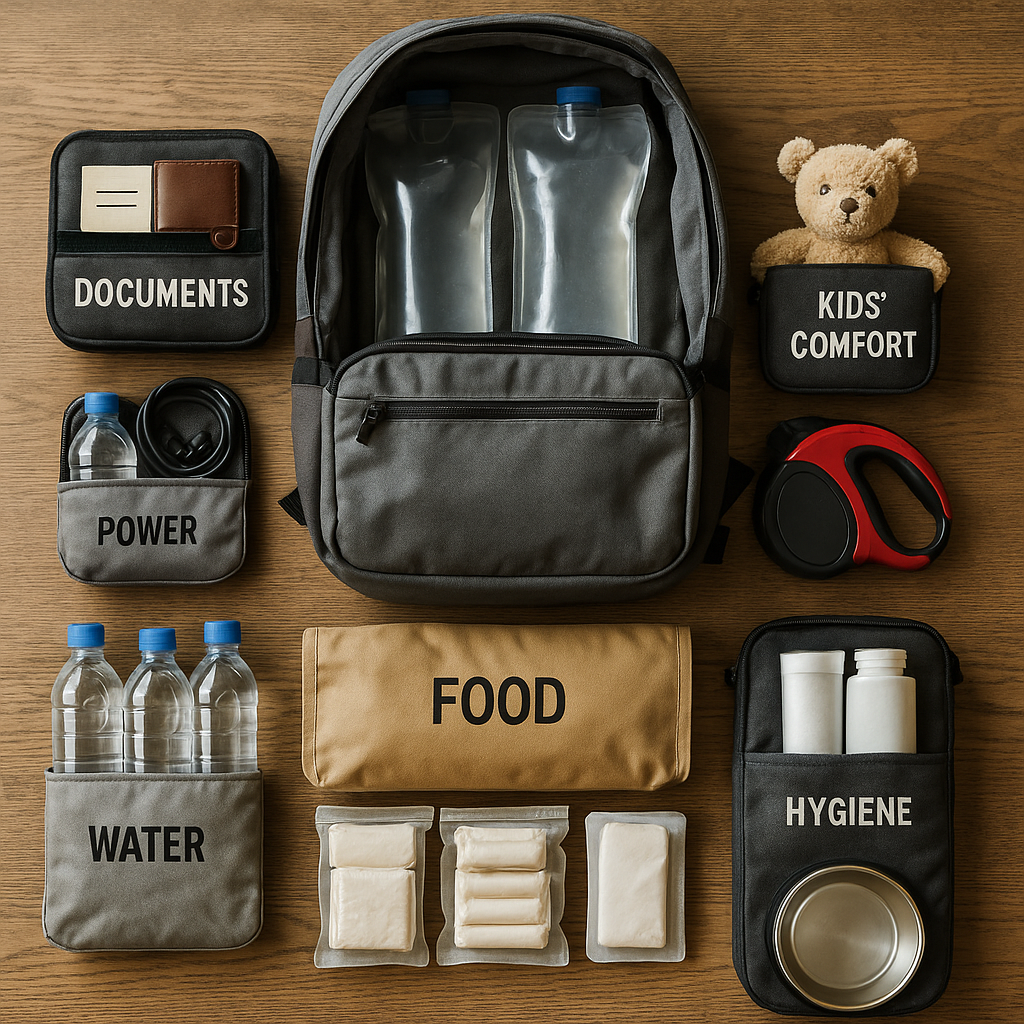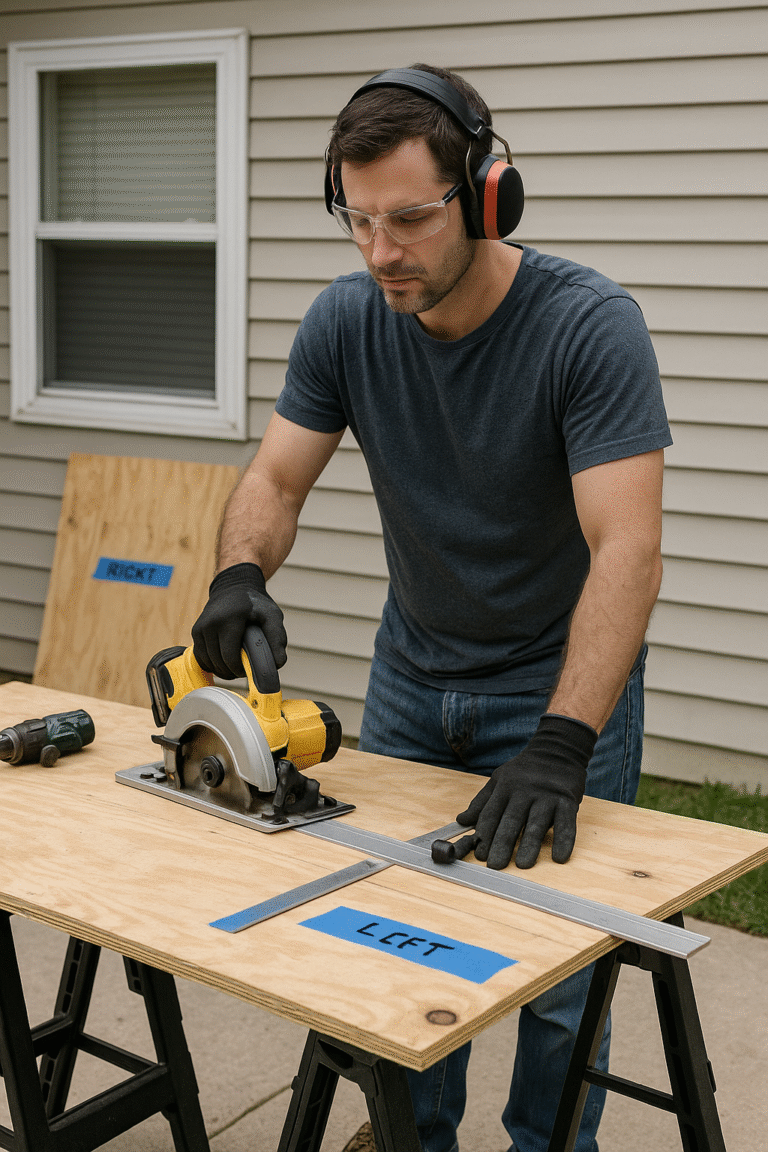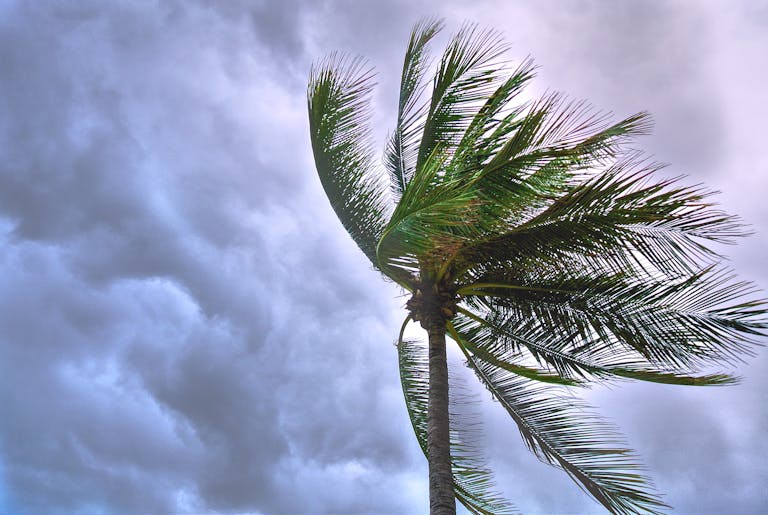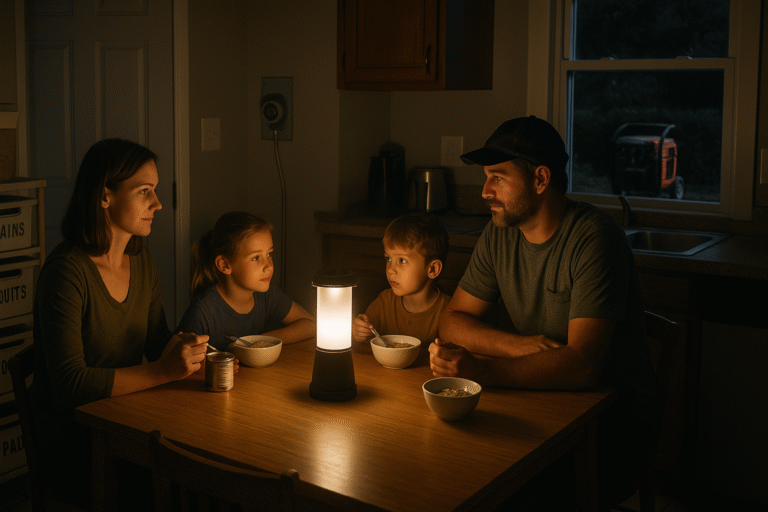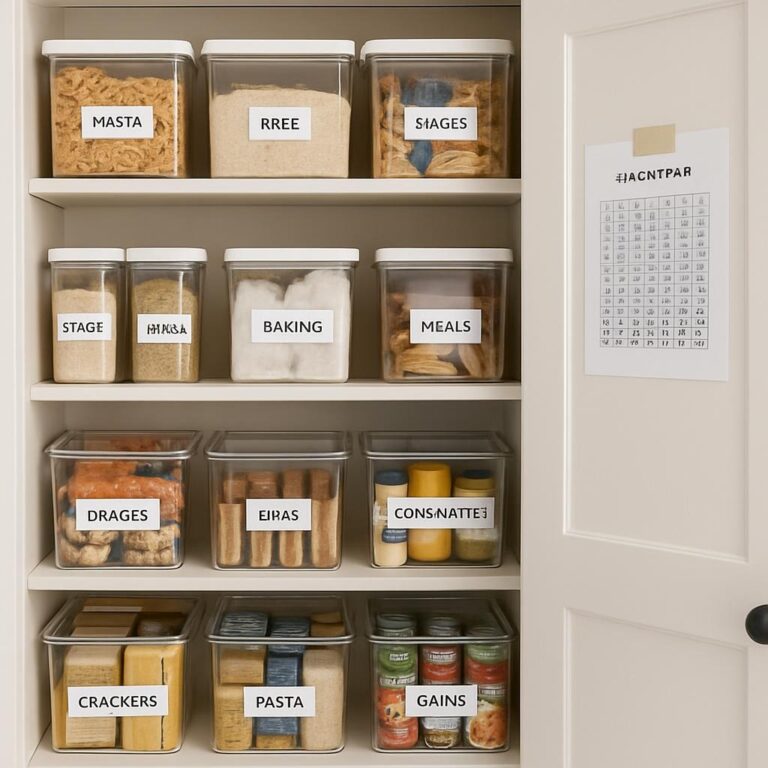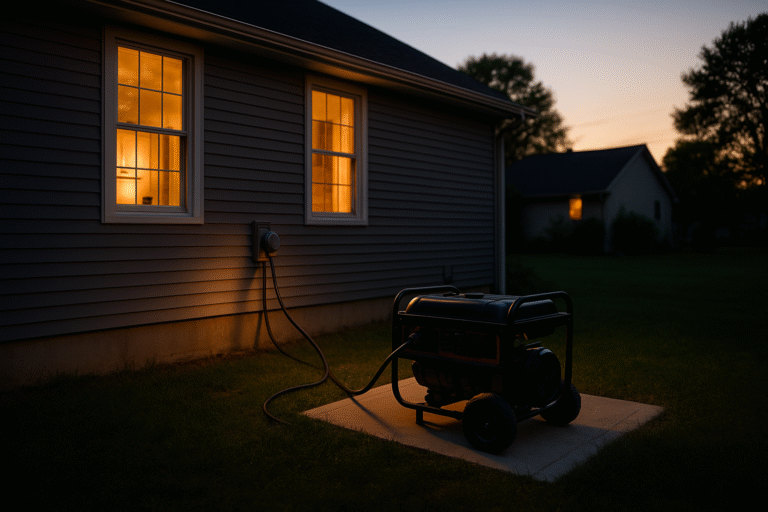How to Build a 72-Hour Hurricane Go Bag for Your Family
When a hurricane disrupts basic services, the first seventy-two hours are the most uncomfortable. A good go bag turns that window from chaos into routine. The goal is simple: water, calories, light, first-aid, hygiene, and documents in one place, packed so anyone in the household can carry or roll it to the car. The steps below assume a family of two adults and two kids; adjust quantities to match your household. Having a hurricane go bag ready can save time and reduce stress during emergencies.
Key Items for Your Hurricane Go Bag
- Bag: 40–55L backpack or a rolling duffel with shoulder straps; color-coded pouches or packing cubes.
- Water: 3 liters per person per day (bottled or collapsible bladders), compact filter, water purification tablets.
- Food: 2,000–2,500 kcal per adult per day; shelf-stable (energy bars, tuna packets, nut butters), utensil set, can opener.
- Power & Light: LED headlamps, compact flashlight, power bank (20,000 mAh+), AA/AAA batteries, small solar panel or car charger.
- Communication: NOAA weather radio (hand-crank or battery), phone charging cables, printed contact list.
- First-Aid & Meds: Family first-aid kit, 7-day supply of prescriptions, OTC pain reliever/antihistamine, space blankets, gloves.
- Hygiene: Toothbrushes, paste, wipes, soap sheets, hand sanitizer, travel towel, toilet paper in zip bag, waste bags.
- Documents & Cash: Waterproof pouch with IDs, insurance details, medical list, USB backup; small bills.
- Clothing: One change per person, socks, light rain layer, sturdy footwear; for infants: diapers and supplies.
- Kids’ Comfort: Small plush or game, notebook and pencils, snack duplicates.
- Pets: Leash, collapsible bowl, 3-day food supply, meds, vet records copy.
- Tools: Multi-tool, whistle, duct tape, zip ties, small pry bar, lighter/waterproof matches.
Steps
1) Size the bag and assign roles
Lay everything out first. If a single pack exceeds 25% of the carrier’s body weight, split into a secondary daypack or rolling duffel. Give each adult a role card: one manages water and power, the other handles documents and first-aid. Kids can carry their own comfort pouch.
2) Water plan that survives delays
Pack at least nine liters for a family of four for one day, then scale to three days if weight allows. Add a compact filter and purification tablets so you can extend the supply. Store extra cases of water at home; the bag holds your mobile reserve.
3) Pack calories that you’ll actually eat
Choose foods you already rotate at home. Group by meal blocks in quart bags: breakfast bars, lunch packets, savory snacks. Add a can opener even if most items are tear-open.
4) Build a lighting and power layer
Headlamps keep hands free. Pack a flashlight for area light and a power bank for phones. Add spare batteries in a separate pouch. If you own a small solar panel, include the cable set and a short checklist card for setup.
5) First-aid and meds
Use a pouch with a cross symbol. Inside: wound care, antiseptic, bandages, pain reliever, antihistamine, and a seven-day supply of prescriptions in labeled pharmacy vials. Include a printed medication list with dosages.
6) Hygiene and sanitation
Pack wipes, sanitizer, and soap sheets. Place toilet paper in a zip bag and include several heavy-duty trash bags. Add a travel towel and dental kit per person. Hygiene keeps morale up and infections down. A well-prepared hurricane go bag is crucial for your family’s comfort.
7) Documents, cash, and backups
Make a waterproof folder for IDs, insurance details, property photos, and medical summary. Add a small USB drive with encrypted backups of critical files. Carry small bills for card-down scenarios. Ensure your hurricane go bag includes essential documents and cash for quick access.
8) Clothing and weather
One change of clothes per person plus socks. Add a light rain layer and bandana. For infants, pack diapers, rash cream, and an extra blanket. For pets, include food, meds, and a leash. Choose clothing wisely for your hurricane go bag to ensure comfort during evacuation.
9) Pack order and labeling
Heaviest and least-used items against the back panel; frequently used items near the top. Label each pouch (water, first-aid, power, hygiene). Place the document pouch where it is easy to reach.
10) Stage, review, and set a reminder
Store the bag by your exit, not in a closet maze. Add a calendar reminder to review monthly: rotate food, charge power banks, confirm prescriptions. Take a quick photo inventory after each refresh.
Safety notes
Document the contents of your hurricane go bag to help with future packing.
- Check allergies before adding OTC meds or snacks.
- Keep blades and multi-tools sheathed and away from kids’ pouches.
- If you carry fuel for stoves, store it separately from the bag per manufacturer guidance.
- Share the plan with everyone; the bag should be usable by any adult in the home.
- Make sure every family member knows the location of the hurricane go bag.
- Review your hurricane go bag regularly to ensure all items are in good condition.
Helpful diagrams
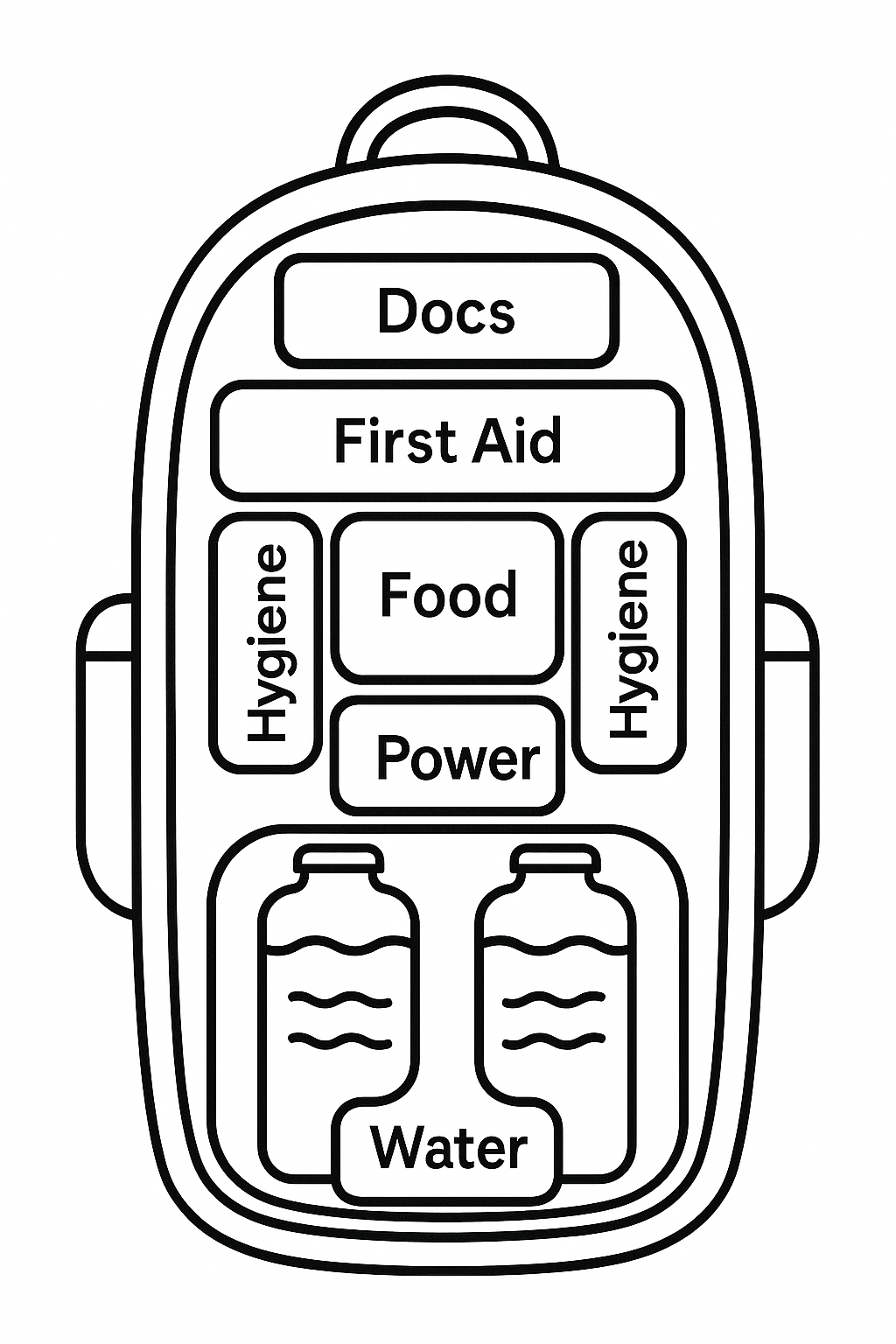
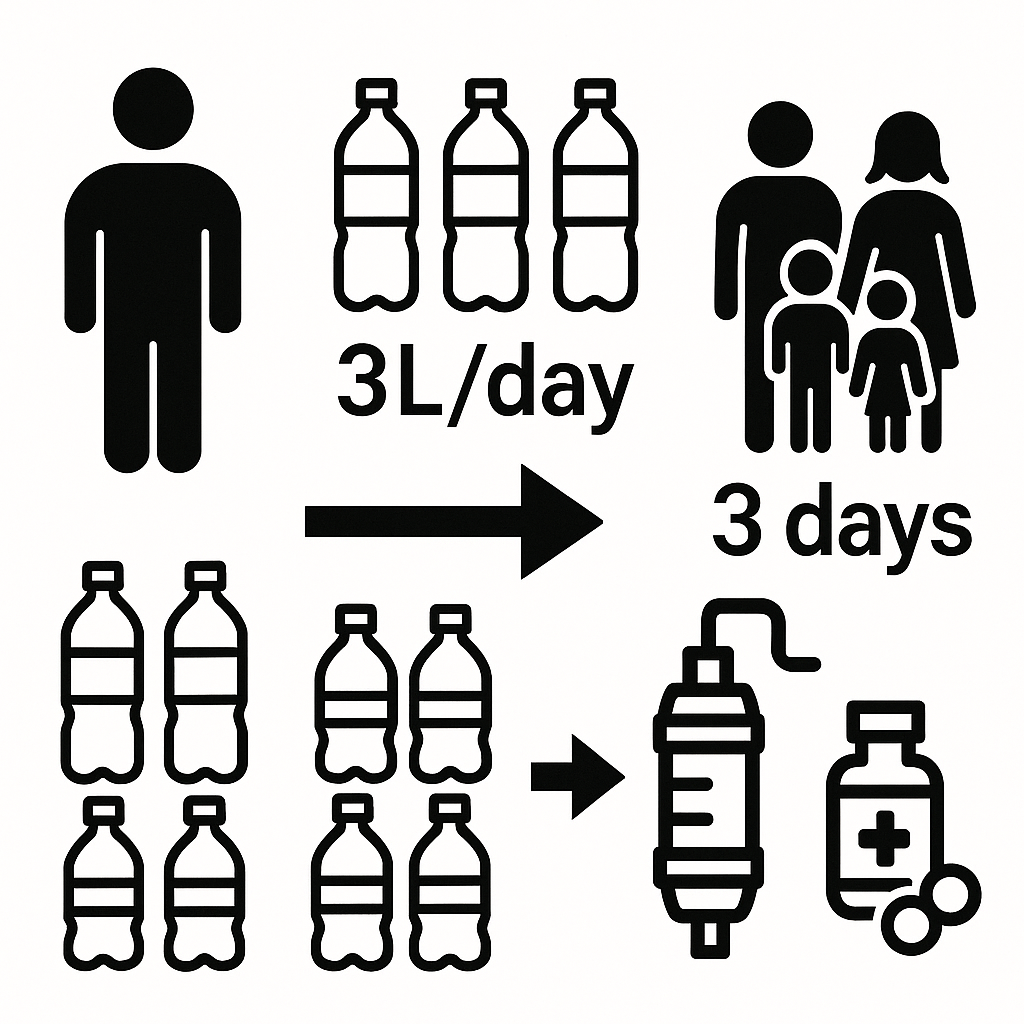
Conclusion: Your Hurricane Go Bag is Essential
Your hurricane go bag is a living kit. Pack it once, review it monthly, and tailor it to your family. When the forecast turns, you will be ready to move in minutes instead of hours.
Helpful Products
Go Bag Emergency Kit Survival Kit Backpack for Family, Preparedness for Hurricanes, Floods, Tsunami, Other Disasters
Frequently Asked Questions
How heavy is too heavy?
Keep the main pack under a quarter of the carrier’s body weight. Split loads into a second bag if needed.
What food lasts and stays edible?
Shelf-stable, familiar items you already rotate: bars, nut butters, tuna packets, dehydrated meals you like at home.
How often should I rotate items?
Check monthly; rotate snacks every 3–6 months; inspect batteries; update prescriptions as they change.
Do I need a water filter if I already packed bottles?
Yes. A compact filter gives you a margin if distribution is slow or you shelter longer than expected.
Where should I store the bag?
Near your primary exit, off the floor, and away from heat. Everyone should know the exact location.
Regularly update your hurricane go bag to adapt to changing family needs.
